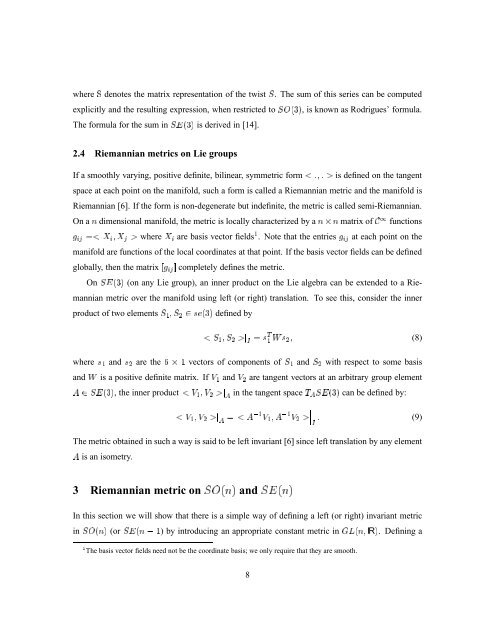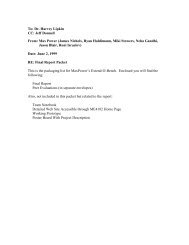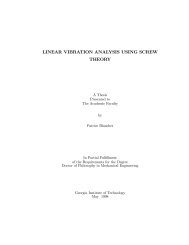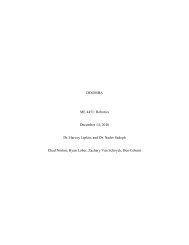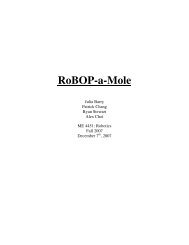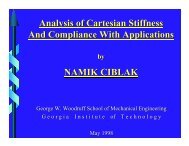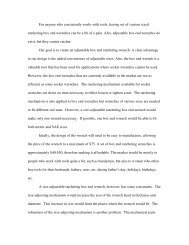New metrics for rigid body motion interpolation - helix
New metrics for rigid body motion interpolation - helix
New metrics for rigid body motion interpolation - helix
You also want an ePaper? Increase the reach of your titles
YUMPU automatically turns print PDFs into web optimized ePapers that Google loves.
where S denotes the matrix representation of the twist S. The sum of this series can be computed<br />
explicitly and the resulting expression, when restricted to SO(3), is known as Rodrigues’ <strong>for</strong>mula.<br />
The <strong>for</strong>mula <strong>for</strong> the sum in SE(3) is derived in [14].<br />
2.4 Riemannian <strong>metrics</strong> on Lie groups<br />
If a smoothly varying, positive definite, bilinear, symmetric <strong>for</strong>m is defined on the tangent<br />
space at each point on the manifold, such a <strong>for</strong>m is called a Riemannian metric and the manifold is<br />
Riemannian [6]. If the <strong>for</strong>m is non-degenerate but indefinite, the metric is called semi-Riemannian.<br />
On a n dimensional manifold, the metric is locally characterized by a n n matrix of C 1 functions<br />
g ij = where X i are basis vector fields 1 . Note that the entries g ij at each point on the<br />
manifold are functions of the local coordinates at that point. If the basis vector fields can be defined<br />
globally, then the matrix [g ij ] completely defines the metric.<br />
On SE(3) (on any Lie group), an inner product on the Lie algebra can be extended to a Riemannian<br />
metric over the manifold using left (or right) translation. To see this, consider the inner<br />
product of two elements S 1 ;S 2 2 se(3) defined by<br />
j I = s T Ws 1 2; (8)<br />
where s 1 and s 2 are the 6 1 vectors of components of S 1 and S 2 with respect to some basis<br />
and W is a positive definite matrix. If V 1 and V 2 are tangent vectors at an arbitrary group element<br />
A 2 SE(3), the inner product j A<br />
in the tangent space T A SE(3) can be defined by:<br />
j A = : (9)<br />
I<br />
The metric obtained in such a way is said to be left invariant [6] since left translation by any element<br />
A is an isometry.<br />
<br />
3 Riemannian metric on SO(n) and SE(n)<br />
In this section we will show that there is a simple way of defining a left (or right) invariant metric<br />
in SO(n) (or SE(n , 1) by introducing an appropriate constant metric in GL(n; IR). Defining a<br />
1 The basis vector fields need not be the coordinate basis; we only require that they are smooth.<br />
8


